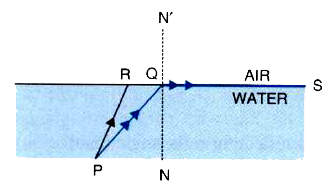Assertion : A thin stainless steel needle can lay floating on a still water surface.
Reason : Any object floats when the buoyancy force balances the weight of hte object.
Statement-1, is true, Statement-2 is true, Statement-2 is correct explanation for statement-1
Statement-1 is true, statement-2 is true, statement-2 is NOT a correct explantion for statement-1
statement-1 is true, statement-2 is false
statement-1 is false statement-2 is true
The correct Answer is:C
Step by step video & image solution for Assertion : A thin stainless steel needle can lay floating on a still water surface. Reason : Any object floats when the buoyancy force balances the weight of hte object. by Physics experts to help you in doubts & scoring excellent marks in Class 11 exams.
Updated on:21/07/2023Topper's Solved these Questions
- ELASTICITY, SURFACE TENSION AND FLUID MECHANICSBOOK - ALLENCHAPTER - ELASTICITY, SURFACE TENSION AND FLUID MECHANICSEXERCISE - Exercise 3 (Comprehension based questions)
24 Videos
- ELASTICITY, SURFACE TENSION AND FLUID MECHANICSBOOK - ALLENCHAPTER - ELASTICITY, SURFACE TENSION AND FLUID MECHANICSEXERCISE - Exercise 4 A (Elasticity)
7 Videos
- ELASTICITY, SURFACE TENSION AND FLUID MECHANICSBOOK - ALLENCHAPTER - ELASTICITY, SURFACE TENSION AND FLUID MECHANICSEXERCISE - Exercise 2 (One or more than one correct answer)
53 Videos
- CENTRE OF MASSBOOK - ALLENCHAPTER - CENTRE OF MASSEXERCISE - EXERCISE-V B
19 Videos
- ERROR AND MEASUREMENTBOOK - ALLENCHAPTER - ERROR AND MEASUREMENTEXERCISE - Part-2(Exercise-2)(B)
22 Videos
Similar Questions
Knowledge Check
Assertion: If an object is submerged in fluid at rest, the fluid exerts a force on its surface.
Reason: The force exerted by the fluid at rest has to be parallel to the surface in contact with it.ABoth assertion and reason are true and reason is the correct explanation of assertion.BBoth assertion and reason are true but reason is not the correct explanation of assertion.CAssertion is true and reason is false.DBoth assertion and reason are false.
_E01_059_Q01.png)
An object of weight W has a uniform rectangular cross section of a x2a and density of 0.25g/cm3 part of it is immersed in water and the rectangle is tilted by 45∘− while one of its corners is just at the water surface find the torque of the buoyancy force to the centre of mass of the object.
View SolutionAssertion : If ice is floating in water and it melts, then level of water remains unchanged.
Reason : When the ice is floating, weight of liquid displaced is equal to the weight of ice.
View SolutionAssertion : Colours can be seen in thin layers of oil on the surface of water.
Reason : White light is composed of several colours.
View SolutionWhen a greased iron needle is placed gently on the surface of water at rest, it floats on the surface of water. Why?
View SolutionAssertion : Animate object can accelerate in the absence of external force.
Reason : Newton's second law is not applicable on animate object.
View SolutionAssertion : A solid object of iron is dipped in water, both are at same temperature of 2∘C. If the temperature of water is increased by 2∘C, then the buoyancy force action of the object will increase.
Reason : If we increase the temperature of water from 2∘C to 4∘C, then density of water will increase. Ignore expansion of solid sphere.
View SolutionIn figure, PQ and PR are the two light rays emerging from an object P. the ray PQ is refracted as QS.

(a) state the special name given to the angle of incidence ∠PQN for the ray PQ.
(b) What is the angle of refraction for the refracted ray QS?
(c) Name the phenomenono that occurs if the angle of incidence ∠PQN is increased.
(d) The ray PR suffers partial reflection and refraction on the water-air surface. give reason.
(e) Draw in the diagram the refracted ray for the incident ray PR and hence show the position of the image of the object P by the letter P' when seen vertically from above.
View Solution
